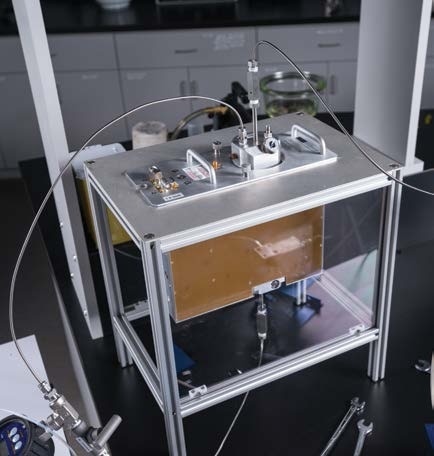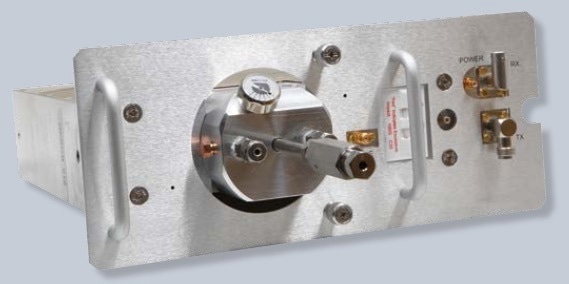
Nuclear magnetic resonance (NMR) is an important tool for SCAL as well as for routine core analysis. A majority of measurements are carried out at ambient temperature and pressure, but it is becoming more and more important to make measurements at as close to reservoir conditions as possible. For this purpose, a NMR-compatible core holder is required, but existing designs have severe limitations on NMR performance or sample handling.
The P5 Cells overcome these limitations and enable users to make NMR measurements at reservoir conditions. The cells are designed and built with a focus on performance and usability, enabling users to pressurize samples with up to 5,000 psi of confining pressure. The P5 Cells, unique to the GeoSpec range of NMR rock core analyzers, employ advanced materials to allow the NMR coil to be closer to the sample without compromising the performance of the GeoSpec.
The P5 Cells take advantage of the superior performance of the GeoSpec range of instruments, as the only pressure vessels specially developed with Q-Sense technology. With high signal-to-noise ratios and short echo spacings, Q-Sense helps achieve improved measurement of fluids in smaller pores, maximizing the ability of the P5 cell to carry out measurements on tight rocks from unconventional reservoirs.
Unique Features of the P5 Cell:
- Allows quick loading/unloading of samples through the twist-lock lid
- Can be held at pressure outside the instrument
- Multiple levels of safety protection
- Low background signals for effective measurements on low volume samples such as shales
- NMR coil embedded in the cell, enabling faster and more accurate measurements

Make Overburden Studies Routine
No longer does one sample monopolize the NMR instrument for days or weeks. With the P5 Cells, the sample can be pressurized inside as well as outside the instrument. Since the pressurized cells can be inserted and removed from the instrument without depressurizing, pressure cycling issues are eliminated. The cells have pressure fittings at the top and bottom, enabling users to carry out pressure flow studies.
Oxford Instruments’ first priority is user safety. The P5 Cell is an industry first; its secondary containment system delivers unprecedented protection in a pressurized environment. Each cell is CE certified and tested to ascertain that the highest quality and safety standards are fulfilled.
P5 Overburden System
The P5 overburden system includes:
- P5 Cell
- O-ring replacement kit
- Bench stand
- Flow pressure fittings
- NMR isolation fittings
Note: System does NOT include pressurization or flow apparatus.
| Specification |
P5 - 1”/53 |
P5 - 1.5”/53 |
P5 - 1”/75 |
P5 - 1.5”/75 |
| Rock Plug size |
Diameter |
Length |
Diameter |
Length |
Diameter |
Length |
Diameter |
Length |
| 1.0” |
Up to 2” |
1.5” |
Up to 2” |
1.0” |
Up to 2” |
1.5” |
Up to 3” |
| Maximum Working Pressure |
5,000 psi |
2,500 psi |
5,000 psi |
5,000 psi |
| Maximum working temperature |
100 °C |
100 °C |
100 °C |
100 °C |
| Safety features |
Main pressure component tested to three times rated pressure; Secondary containment; Integrated burst disc and pressure gage; Drop (shock) protector; CE certified |
The P5 Cell is specifically developed to operate with 2 MHz and 12 MHz systems in the GeoSpec range of products.

This information has been sourced, reviewed and adapted from materials provided by Oxford Instruments Magnetic Resonance.
For more information on this source, please visit Oxford Instruments Magnetic Resonance.